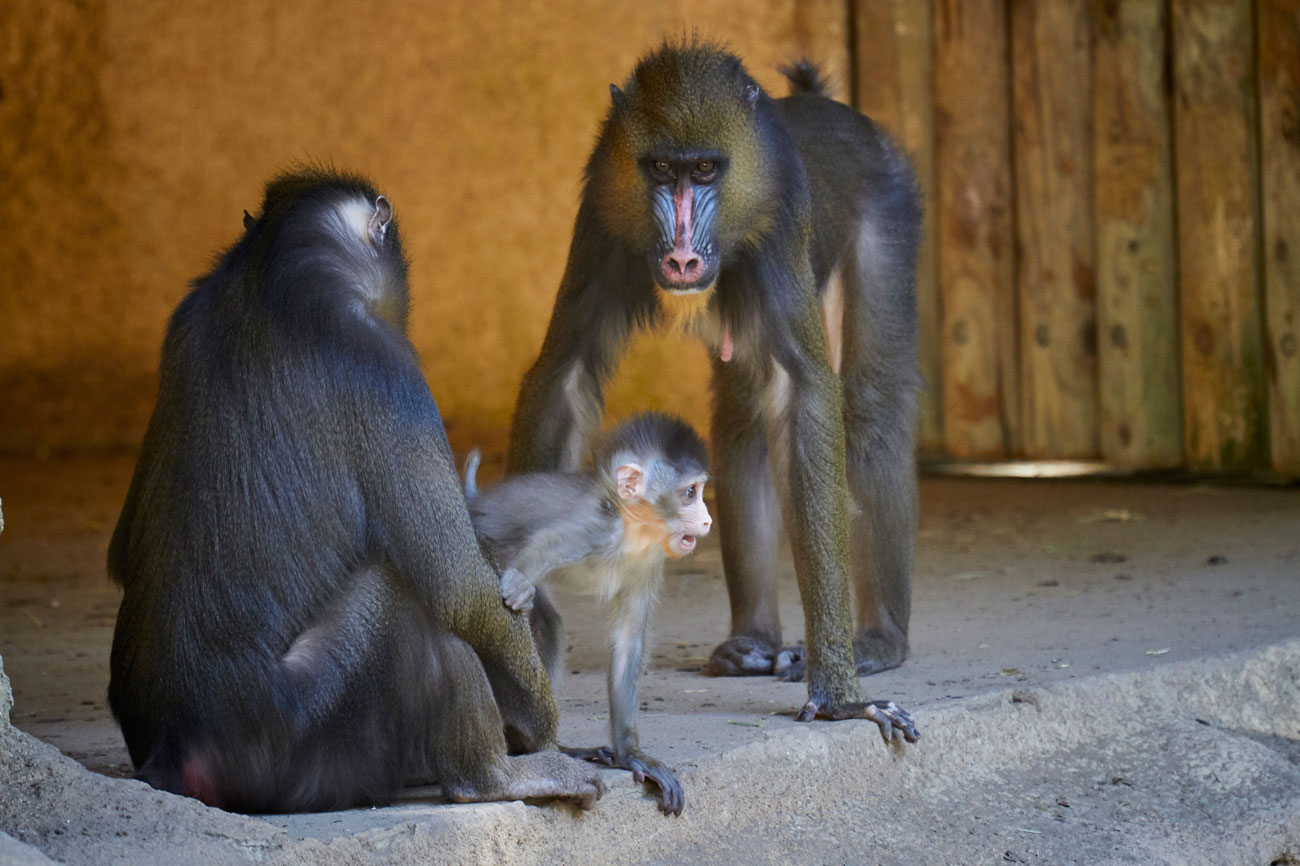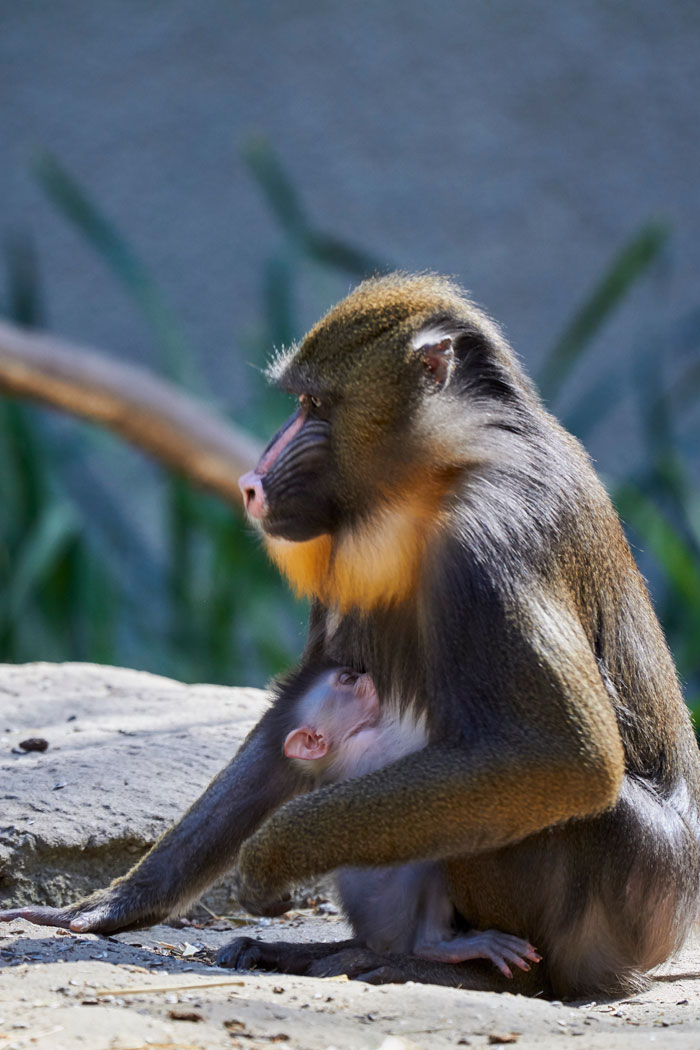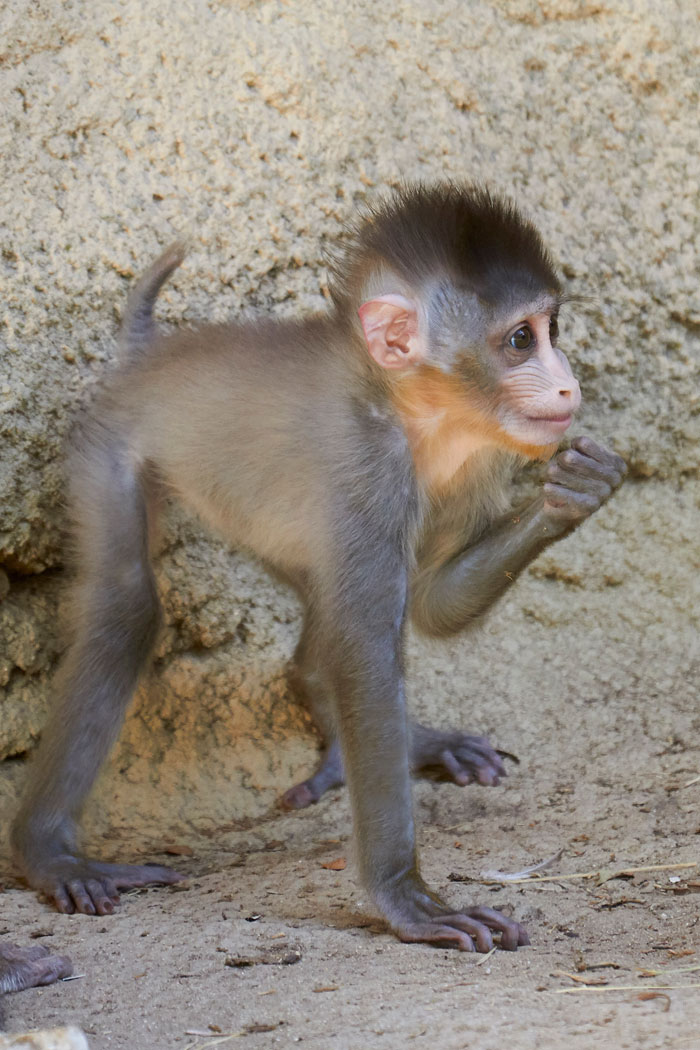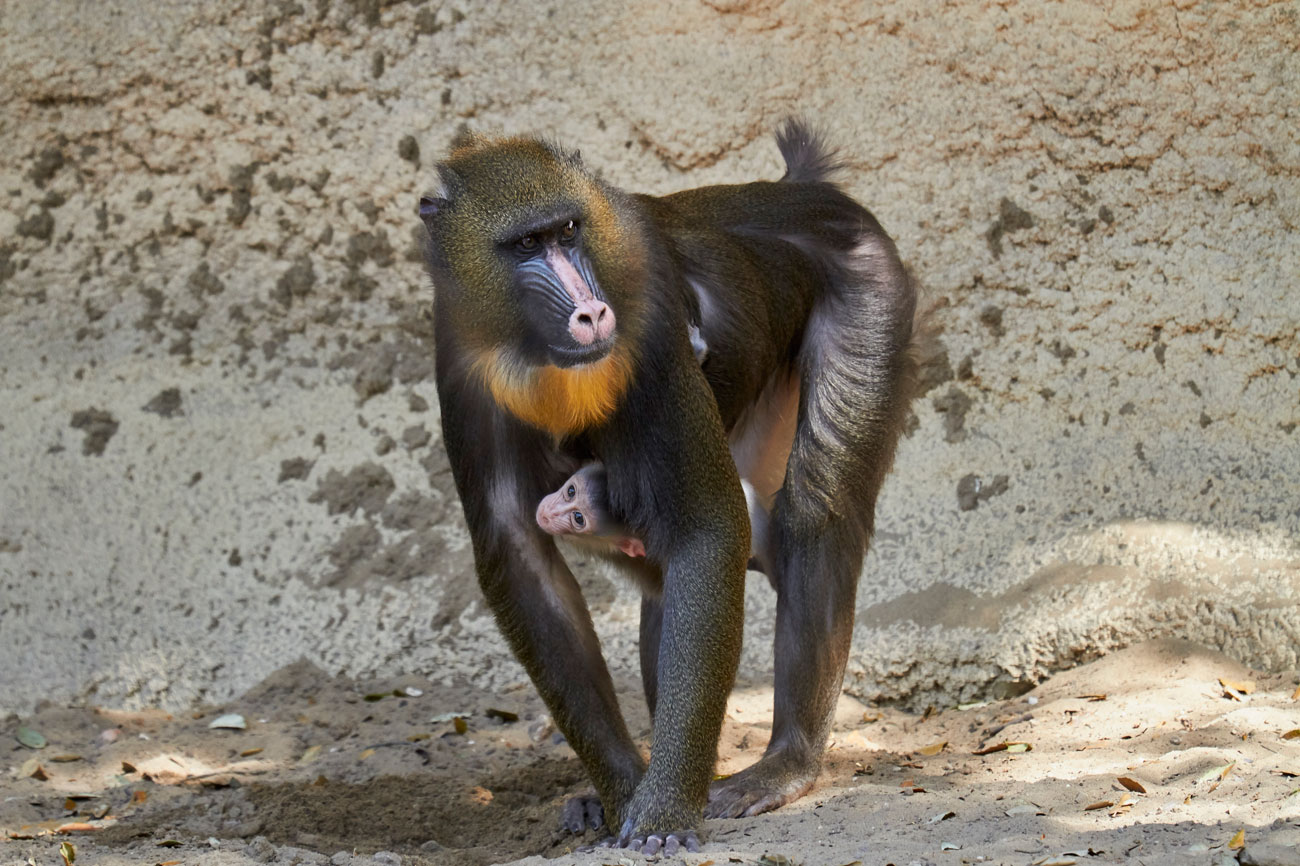Birth of a mandrill

Our troop of mandrills (Mandrillus sphinx) has expanded with the birth of a baby about one month ago. The group now gathers 18 individuals including 4 young under 2 years old.

Male and female mandrills are characterized by an extreme sexual dimorphism when they reach adulthood: the males weigh 3 times as much than females and show bright colors of the face and genitals. Their heads: they have extremely long canine teeth used for displays, communication and self-defense.

© F. Perroux/Zoo de La Palmyre 
© F. Perroux/Zoo de La Palmyre
The species is omnivorous and feeds on fruits, leaves, seeds and small animals (lizards, insects, birds, small mammals). Males feed mostly on the ground whereas females and young forage more often in trees. Mandrills have large premolars and can crack harder seeds and nuts than other primates.

Deforestation and mostly poaching are the main threats on the species listed as Vulnerable on the IUCN Red List. Large males are prime targets for poachers who sell their meat to local and regional bushmeat markets.